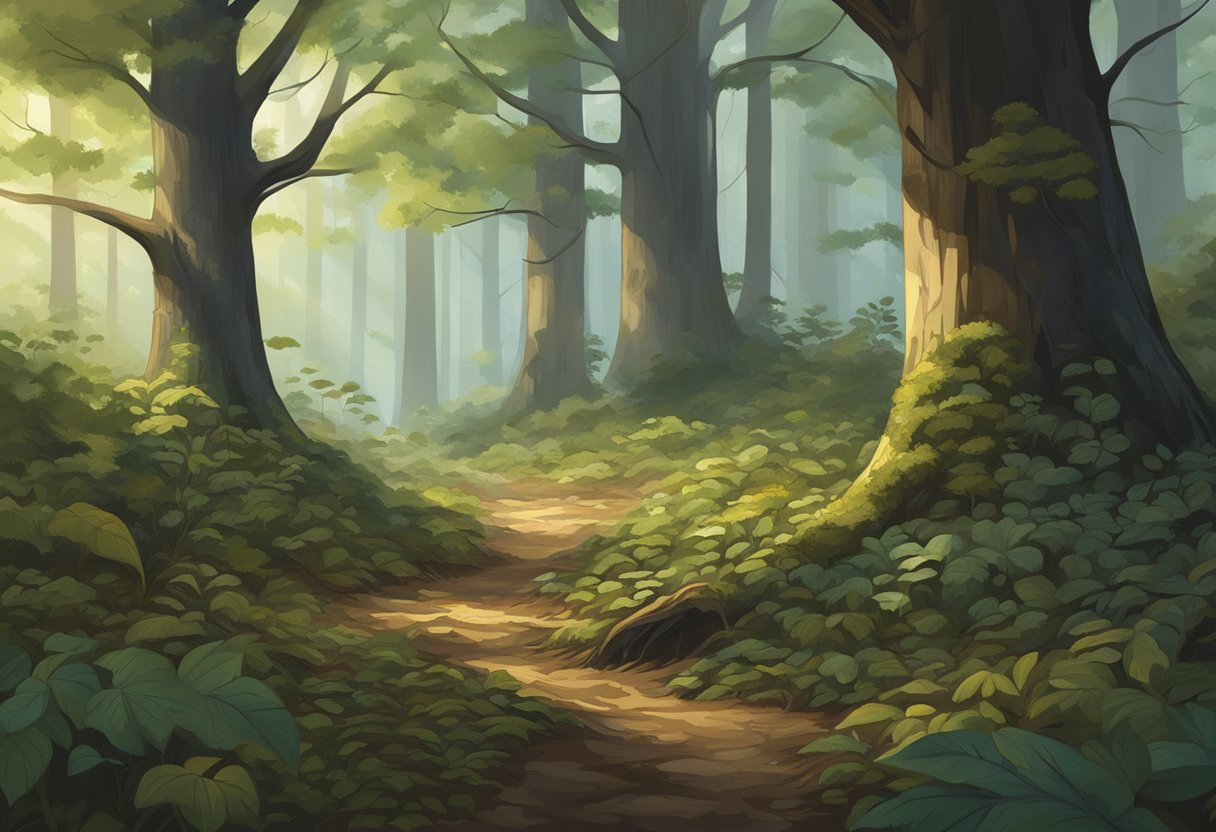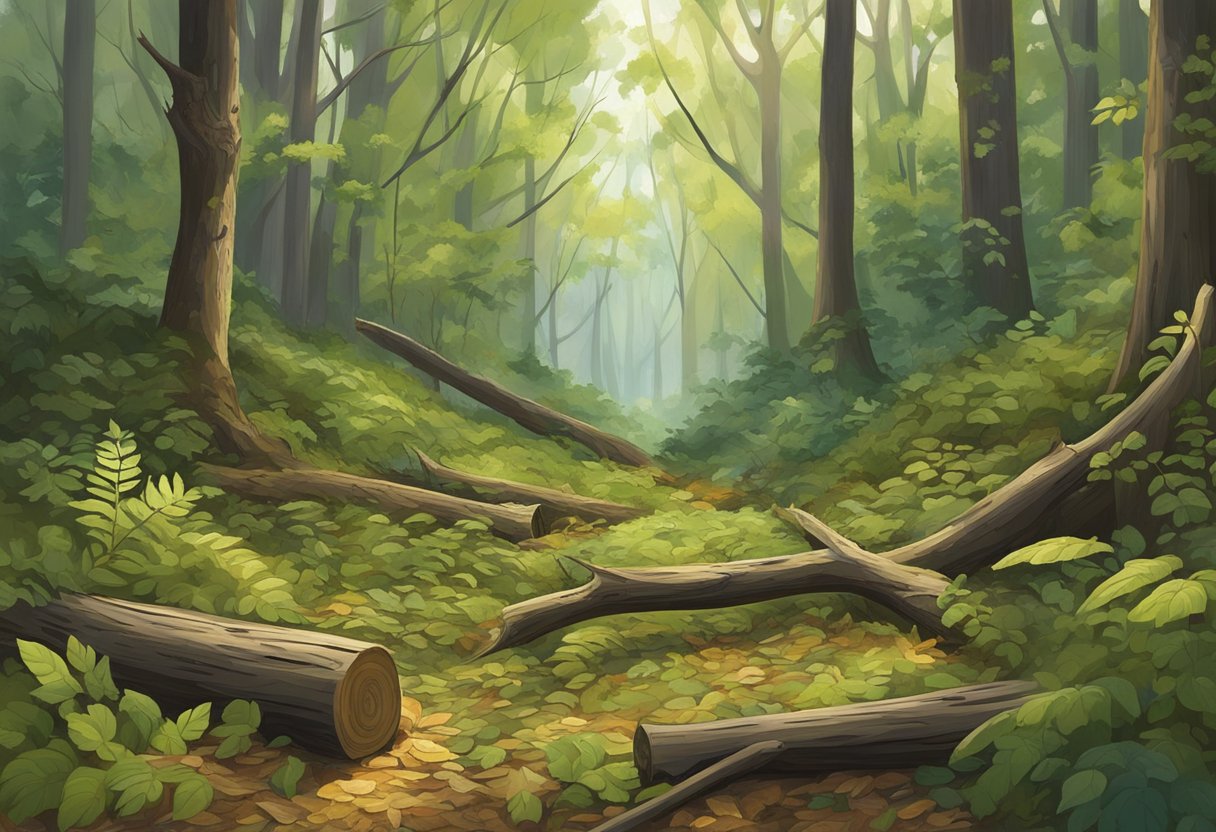Mulching is a practice we often use in our gardens and landscapes for a variety of benefits. It involves the application of materials over the soil surface to enhance soil health, conserve moisture, and improve the overall aesthetics of the area. The mulch serves as a protective layer, moderating soil temperature and retaining water, which can help the underlying earth maintain a more consistent environment for plant roots. It’s a sustainable way to mimic the natural process where leaves and organic matter cover the forest floor, offering a habitat for many microorganisms beneficial to soil health.

In the diverse palette of mulching materials, forest mulch stands out for its specific characteristics. Forest mulch primarily comprises decomposed leaves, wood chips, and sometimes shredded bark, which are byproducts of forestry operations. As these organic components break down, they release nutrients back into the soil, feeding the plants over time. We find this type of mulch to be especially useful for suppressing weed growth without the need for chemical herbicides. Additionally, a well-applied layer of forest mulch can dramatically reduce the evaporation of moisture from the soil, leading to less frequent watering requirements and a healthier soil ecosystem.
Our experience with forest mulch has shown us that it’s not only functional but also aesthetic, providing a neat and tidy appearance to garden beds. The natural tones of the mulch blend seamlessly with the landscape, complementing the greenery and floral hues. When considering forest mulch, we make sure to source it responsibly to ensure we’re contributing positively to the environment and supporting sustainable forestry practices.
Fundamentals of Forest Mulch

Forestry mulch primarily consists of organic matter such as bark, wood chips, leaves, and compost. It is spread over the forest floor to enrich the soil, retain moisture, and suppress weed growth. We understand the importance of selecting the right kind of mulch, as it directly influences the soil nutrients and microbial activity necessary for optimal tree and plant growth.
- Types of Forest Mulch:
- Bark and wood chips: improve water retention and temperature moderation
- Leaves and compost: enhance nitrogen levels and support beneficial organisms
When applied correctly, mulch decomposes naturally, thereby releasing nutrients back into the soil. However, it’s crucial to manage the layer’s thickness, as too much can hinder water and air flow, potentially leading to an unhealthy decomposition process. We’ll share a quick reference guide:
| Thickness | Organic Mulch Type | Benefits |
|---|---|---|
| 2–4 inches | Bark & Wood Chips | Slow decomposition, lasting |
| 1–2 inches | Leaves & Compost | Quick nutrient release |
In our experience, while organic mulch is immensely beneficial, it’s not without potential drawbacks. Excessive mulch can harbor pests and foster diseases if not monitored. Nevertheless, with proper application and routine checks, the advantages, such as improved microbial activity and soil nutrients, usually outweigh the risks.
Application and Benefits

When we consider forestry mulching, we focus on its efficient techniques, how it can bolster soil and plant health, and its environmental impacts.
Mulching Techniques
Forestry mulching involves the use of specialized equipment such as drum or disc mulchers to clear and grind vegetation. Our choice of technique impacts the efficacy of land clearing efforts. For larger land areas, we typically use drum mulchers, while disc mulchers may be suited for precision tasks.
- Drum Mulchers: Efficient for rapid clearing and can handle a variety of vegetation types.
- Disc Mulchers: Offer increased maneuverability for selective clearing.
Soil and Plant Health
Forestry mulching is a key player in maintaining soil health and promoting robust plant growth. It prevents soil compaction and erosion, two significant threats to the ecosystem.
Benefits for Soil and Plants:
- Soil Structure: Improved by adding organic matter which enhances nutrient content.
- Root Growth: Encouraged due to less soil compaction compared to traditional clearing methods.
- Nutrient Recycling: Mulched material decomposes, returning nutrients back to the soil.
Environmental Impacts
Our environmental stewardship is exemplified through the responsible use of forestry mulching. Reduced equipment need and conservation of time are among the chief ecological advantages. Moreover, it minimizes the risk of wildfires by removing potential fuel, alongside promoting biodiversity.
Key Environmental Benefits:
- Erosion Control: The mulch layer protects the soil from wind and water erosion.
- Drought Resilience: Retains moisture, reducing the need for watering.
- Wildfire Prevention: By removing underbrush, it lowers the likelihood of forest fires.
Through these practices, we ensure a balanced approach to land management that safeguards the environment while achieving our land-clearing objectives.